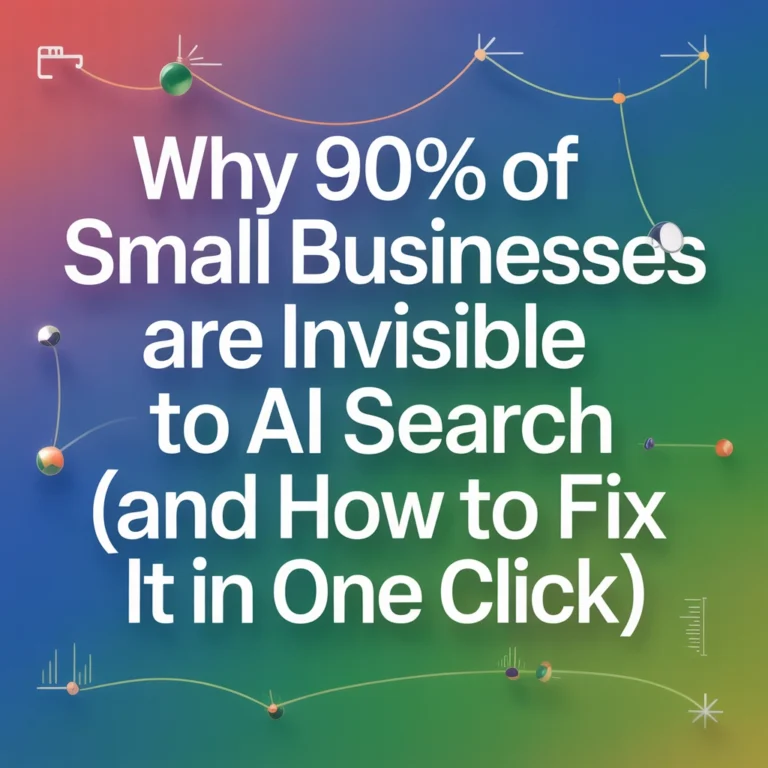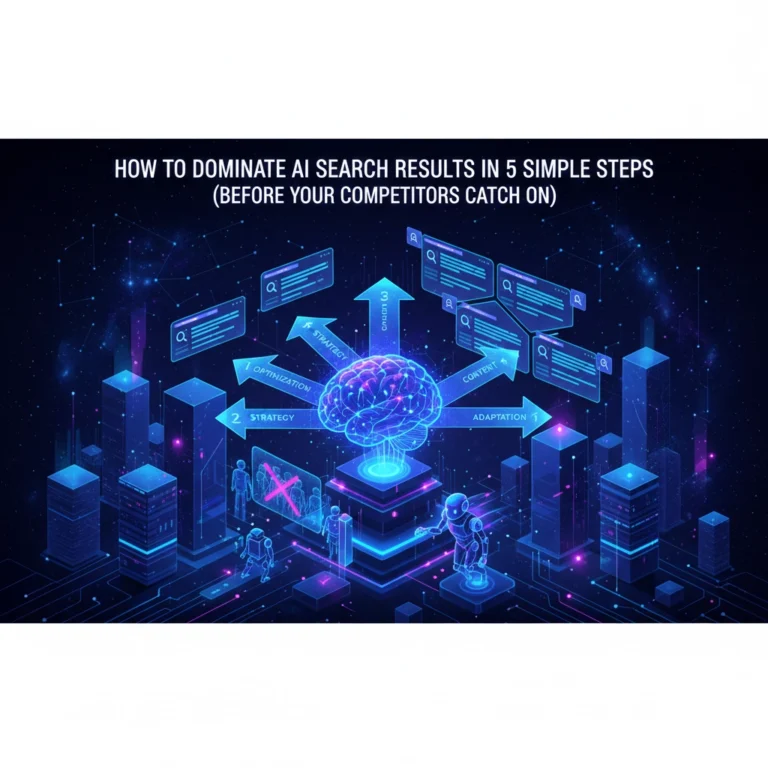Unified Messaging: How AI-Powered Cross-Channel Marketing Delivers Consistent Customer Experiences
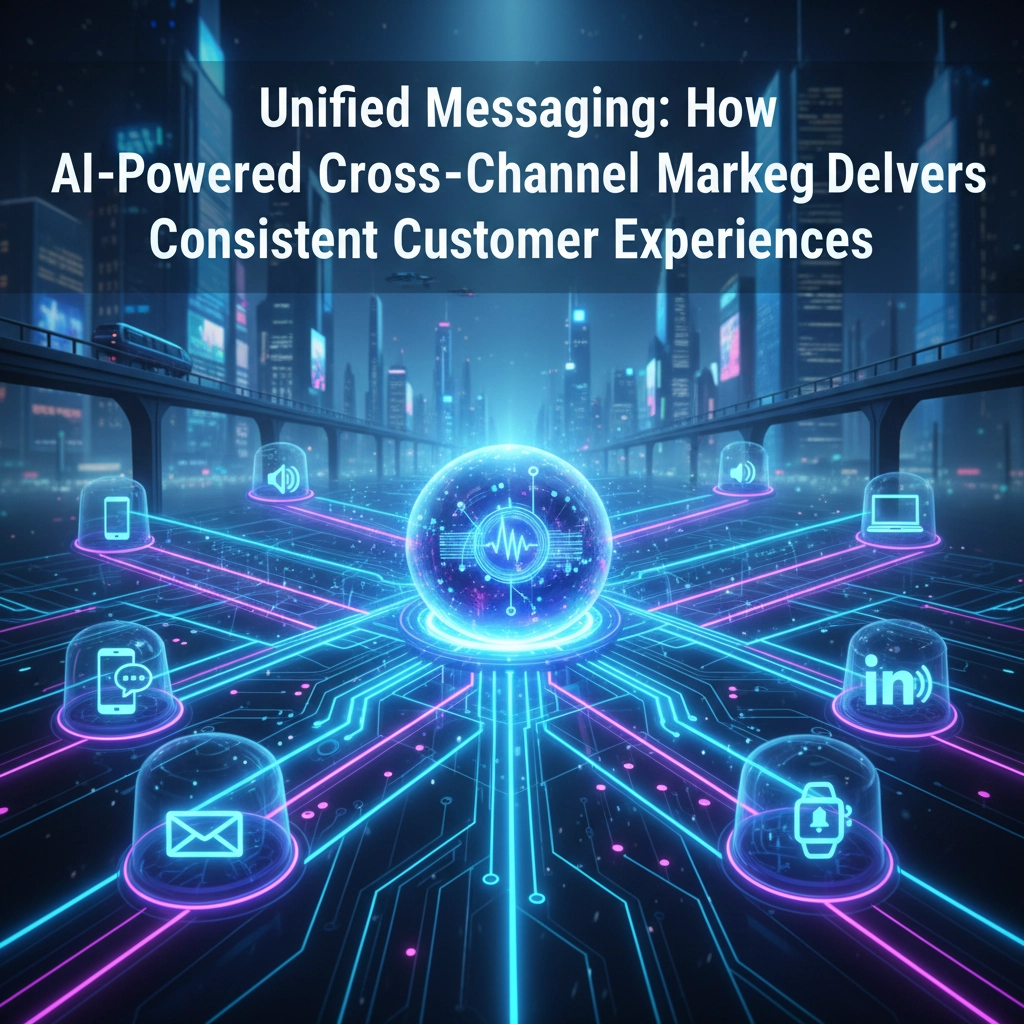
Picture this: Your customer starts browsing your products on Instagram, moves to your website on their laptop, then calls your support team with questions. In each interaction, they expect seamless continuity: no repeated explanations, consistent messaging, and a unified brand experience. This isn't just wishful thinking anymore. AI-powered cross-channel marketing and unified messaging are making this level of customer experience not just possible, but standard.
The digital landscape has evolved beyond simple multichannel approaches. Today's customers don't think in channels: they think in experiences. They expect your brand to recognize them and maintain context whether they're scrolling through social media, reading your emails, or talking to your support team. This shift demands a fundamental change in how businesses approach customer communication.
The Foundation of Unified Messaging
Unified messaging consolidates multiple communication channels: email, SMS, voicemail, social media messages, and chat: into a single interface. Think of it as your customer communication command center where every interaction gets captured, organized, and responded to consistently.
The benefits go far beyond convenience. When all communications flow through a unified system, response times improve dramatically. Your team doesn't waste time jumping between platforms or missing messages buried in different inboxes. Every customer touchpoint gets proper attention, and nothing falls through the cracks.

More importantly, unified messaging creates better customer continuity. When a customer reaches out via email after previously contacting you through social media, your team sees the complete conversation history. No more frustrated customers repeating their issues. No more agents starting from scratch. Just smooth, informed interactions that build trust and satisfaction.
AI: The Cross-Channel Orchestra Conductor
Here's where artificial intelligence transforms everything from good to exceptional. AI doesn't just manage your channels: it orchestrates them. Think of AI as the conductor of an orchestra, ensuring every instrument (channel) plays in harmony to create a beautiful customer experience symphony.
AI coordinates messaging, tone, and actions across all your channels simultaneously. When a customer abandons their cart on your website, AI can trigger a personalized email, update their social media advertising, and prep your support team with context if they call. All of this happens in real-time, maintaining perfect consistency.
The magic lies in AI's ability to maintain your brand voice while adapting content for different platforms. Your Instagram post might be casual and visual, while your email is more detailed and professional: but the core message, values, and information remain aligned. Customers feel like they're interacting with the same brand, just in different settings.
Journey Progression That Makes Sense
Effective cross-channel marketing maps out logical customer journey progression. A potential customer might discover you on LinkedIn, engage with your content on your website, receive targeted emails based on their interests, and finally make a purchase after seeing a retargeting ad on Facebook.
AI enhances this progression by analyzing real-time customer behavior and needs. When someone spends time reading blog posts about AI development services on your website, AI can automatically personalize their email content to focus on implementation strategies rather than basic concepts.
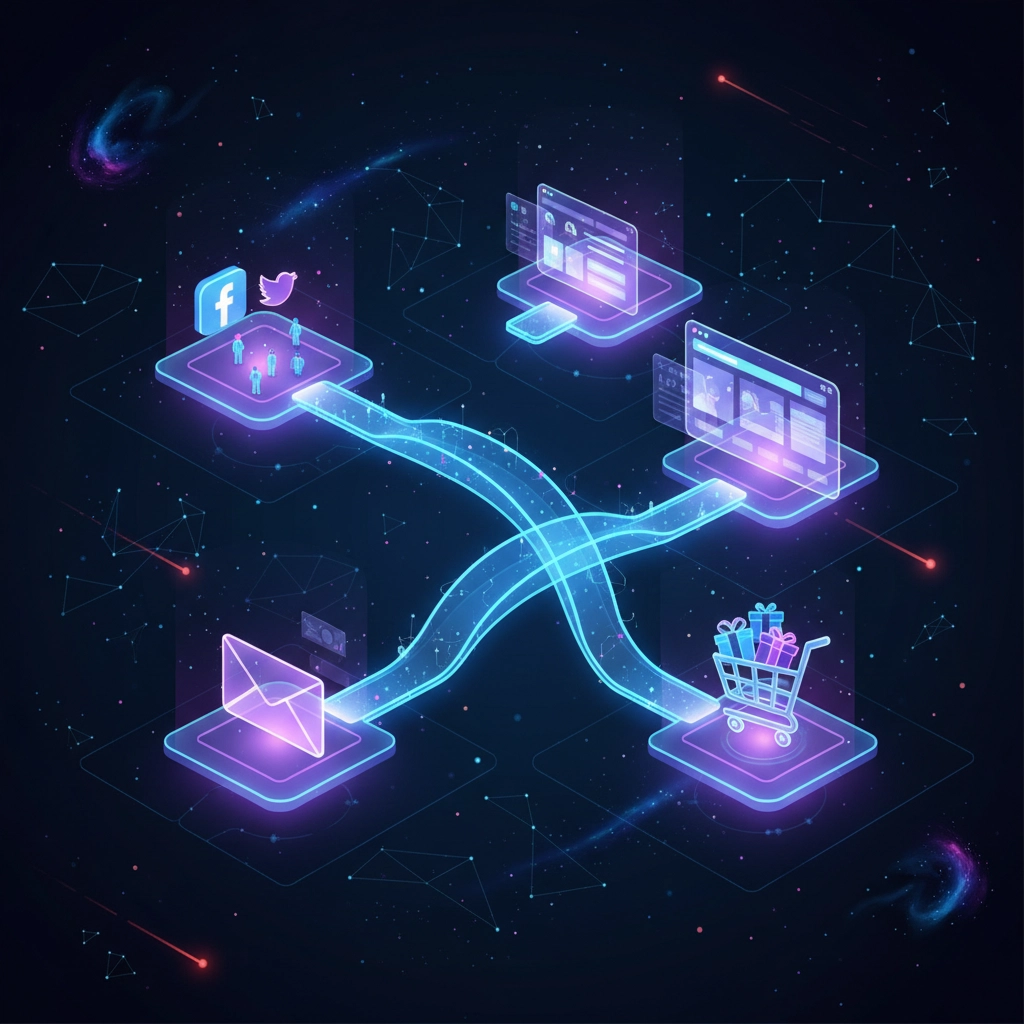
The system learns from every interaction. If customers typically convert after three specific touchpoints, AI optimizes the journey to guide new prospects through those same successful paths. It's like having a GPS for customer relationships: always finding the best route to conversion.
Data Infrastructure: The Backbone of Success
Behind every great cross-channel experience lives a robust data infrastructure, typically powered by a Customer Data Platform (CDP). This system consolidates user identifiers, tracks behavioral events, and enables real-time channel orchestration.
When a customer adds items to their mobile app cart, the system instantly updates their profile across all channels. Their next email might include those specific products. Their social media ads adjust to show complementary items. Your sales team gets notified if it's a high-value potential purchase.
This unified data approach eliminates silos between departments. Marketing, sales, and customer service all work from the same customer insights, creating seamless handoffs and consistent experiences. No more customers explaining their situation multiple times or receiving conflicting information from different teams.
Consistency Without Compromise
Brand consistency across channels requires more than using the same logo everywhere. True consistency encompasses tone of voice, response times, problem-solving approaches, and value delivery. Customers should feel they're interacting with the same brand personality regardless of the touchpoint.
AI maintains this consistency while optimizing content for each platform's unique characteristics. Your Twitter responses stay brief and engaging while your email newsletters provide detailed insights. The personality remains consistent: the presentation adapts to the medium.

This consistency builds trust. When customers know what to expect from your brand, they're more likely to engage, convert, and remain loyal. Inconsistent messaging creates confusion and erodes confidence. AI prevents this by ensuring every customer interaction aligns with your brand standards while meeting platform-specific best practices.
Personalization at Scale
Traditional marketing often forces a choice between personalization and scale. AI-powered unified messaging eliminates this compromise. The system personalizes experiences for thousands of customers simultaneously, treating each interaction as unique while maintaining operational efficiency.
AI analyzes customer data to determine optimal messaging timing, channel preferences, and content types. Some customers prefer detailed email communications, others respond better to brief SMS updates. Some engage more with visual content, others with detailed technical information. The system adapts automatically.
This personalization extends to customer service interactions. When customers contact support, AI provides agents with comprehensive context: previous interactions, preferences, purchase history, and current needs. Agents can jump straight into solving problems rather than gathering background information.
Measuring and Optimizing Performance
AI-powered cross-channel marketing provides unprecedented visibility into customer journey performance. Advanced attribution modeling shows exactly how different touchpoints contribute to conversions. You can see which channel combinations work best, which messages drive engagement, and where customers typically drop off.
This data enables continuous optimization. If email-to-website-to-social media proves most effective for B2B customers, the system automatically guides similar prospects through that path. If certain message sequences consistently drive conversions, those become templates for similar campaigns.
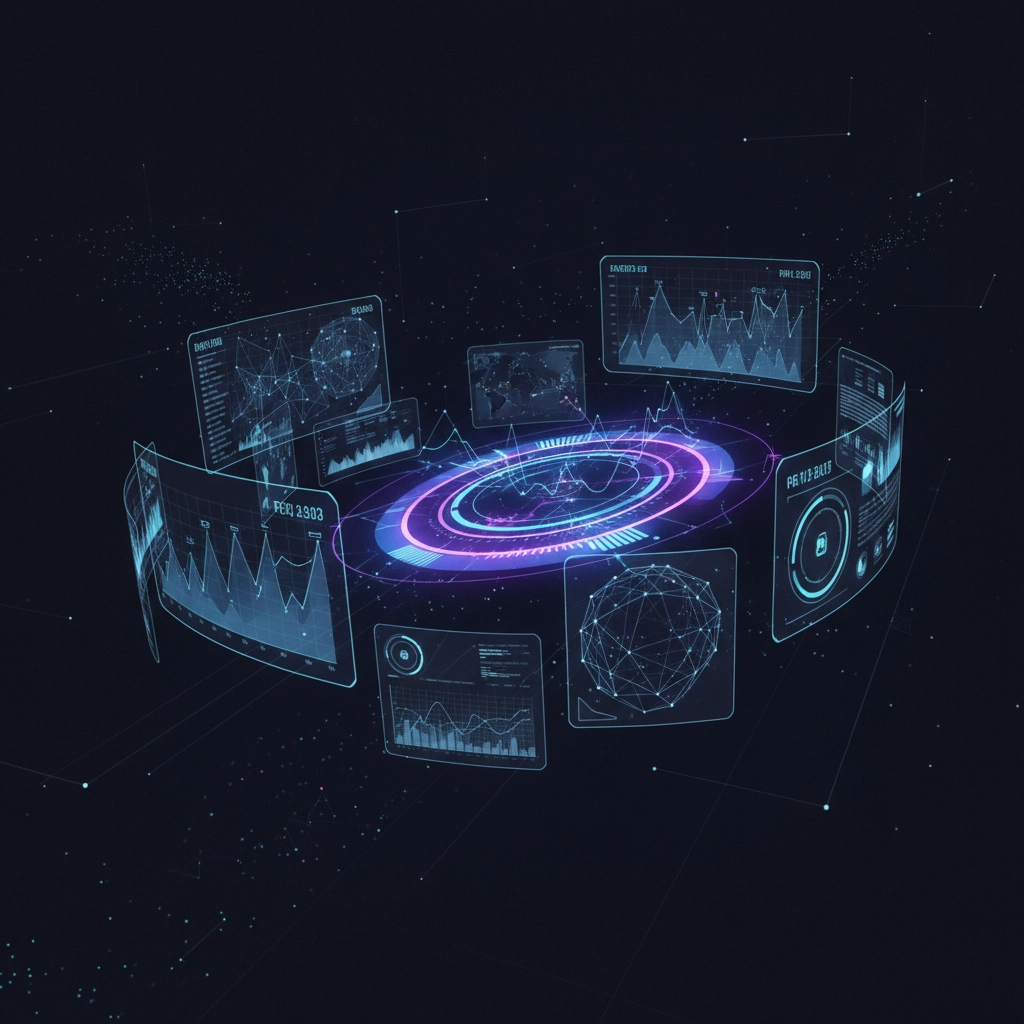
The insights go beyond marketing metrics. You'll understand customer lifetime value patterns, preferred communication channels by segment, and optimal interaction frequency. This intelligence informs strategic decisions about resource allocation, content development, and channel investment.
Implementation Success Strategies
Successfully implementing AI-powered unified messaging requires strategic planning and careful execution. Start by auditing your current channels and identifying integration points. Map your customer journey to understand where consistency matters most and where AI can add the greatest value.
Choose technology platforms that integrate seamlessly with your existing systems. The goal is enhancement, not replacement. Your team should feel empowered by the new capabilities, not overwhelmed by complex interfaces.
Training plays a crucial role in success. Your team needs to understand how to leverage AI insights, interpret cross-channel data, and maintain the human touch that AI enhances but cannot replace. The technology handles the coordination: your team provides the strategy, creativity, and relationship building.
The Future Is Unified
AI-powered cross-channel marketing with unified messaging isn't just a competitive advantage: it's becoming table stakes for customer experience excellence. Businesses that fail to unify their customer communications risk falling behind competitors who deliver seamless, personalized experiences across every touchpoint.
The technology continues evolving rapidly. Predictive AI will soon anticipate customer needs before they're expressed. Voice and visual recognition will add new dimensions to unified messaging. Integration capabilities will expand to include emerging channels and platforms.
For businesses ready to transform their customer experience, the path forward is clear: embrace AI-powered unified messaging, integrate your channels, and focus on delivering consistent value at every customer touchpoint. Your customers expect nothing less, and your competition is already working toward this goal.
The question isn't whether to implement unified messaging: it's how quickly you can make the transition and start delivering the seamless experiences your customers deserve. The future of customer engagement is unified, personalized, and AI-powered. Make sure your business is ready.

